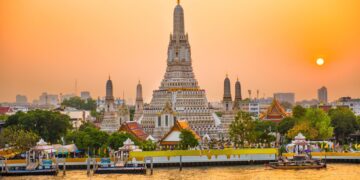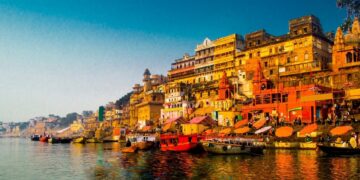Penang. You may not have heard of this region in Malaysia. Or maybe, on the contrary, you heard about an area called the “Pearl of the Orient”. Of course, there are many “pearls” throughout Asia, but one more has the reputation of being the gastronomic capital of Malaysia: Penang. Many would’ve heard already about the Penang Malaysian cuisine. Many would ask themselves after reading this: is there a Penang Malaysian restaurant near me?
Anyway, after a refreshing flight with Qatar Airways (directly to Penang, via Doha), the first meal taken in Penang confirms this to me. I’m at Hai Nan Town Restaurant, and in the middle of a spinning table, a woman continuously brings bowls and plates with local delights. They call them Nyonya and Hainanese, and whatever that means, they’re delicious. To define them, though, Nyonya is a subgroup of the Chinese community, and Hainan is the southernmost province in China, an island with a tropical climate. Regarding food, Nyonya + Hainan = love, in the decor of Penang.
I’m on the island of Penang (Pulau Penang, to be rigorous), in the capital of George Town. The region also includes a continental part (they are divided by the Strait of Malacca), but this does not make it more than the second smallest Malaysian state. With a population of 1.7 million, Penang breaks records related to density. By contrast, George Town is the second-largest city in Malaysia.
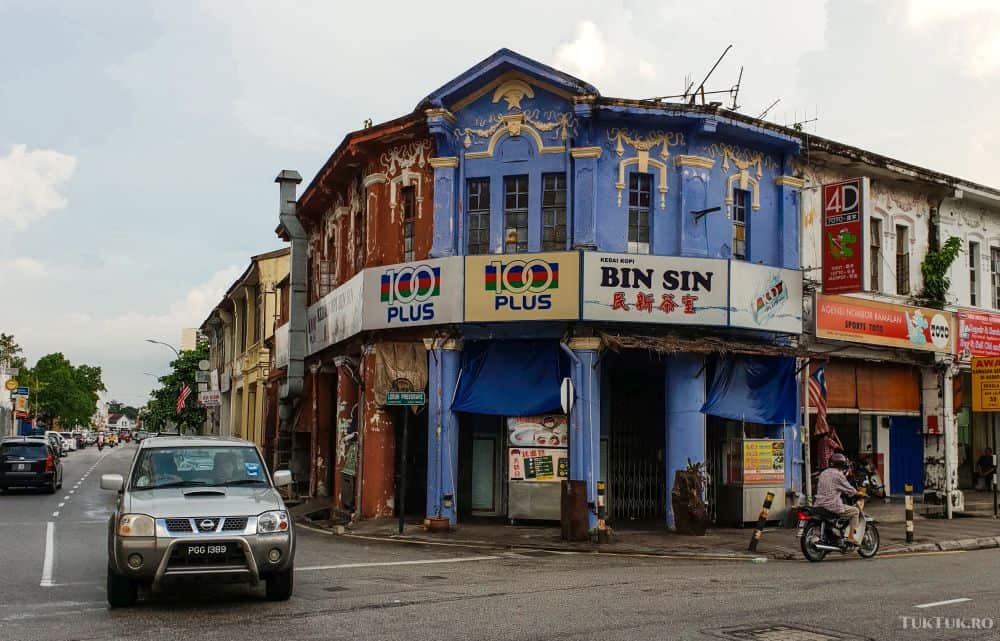

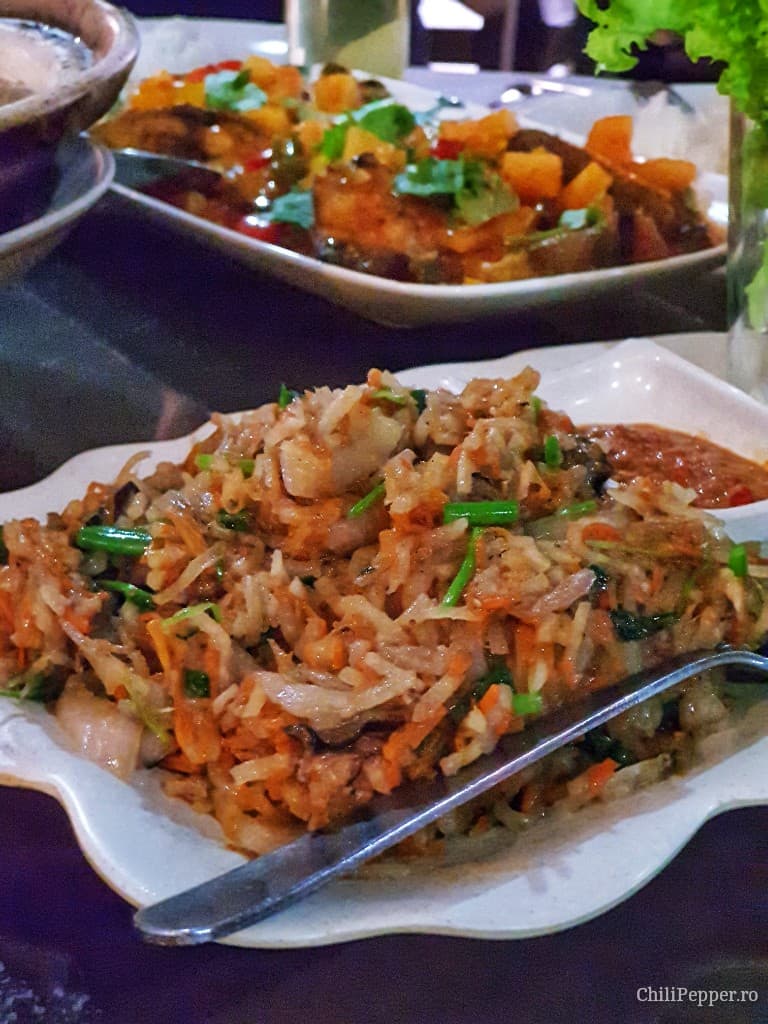
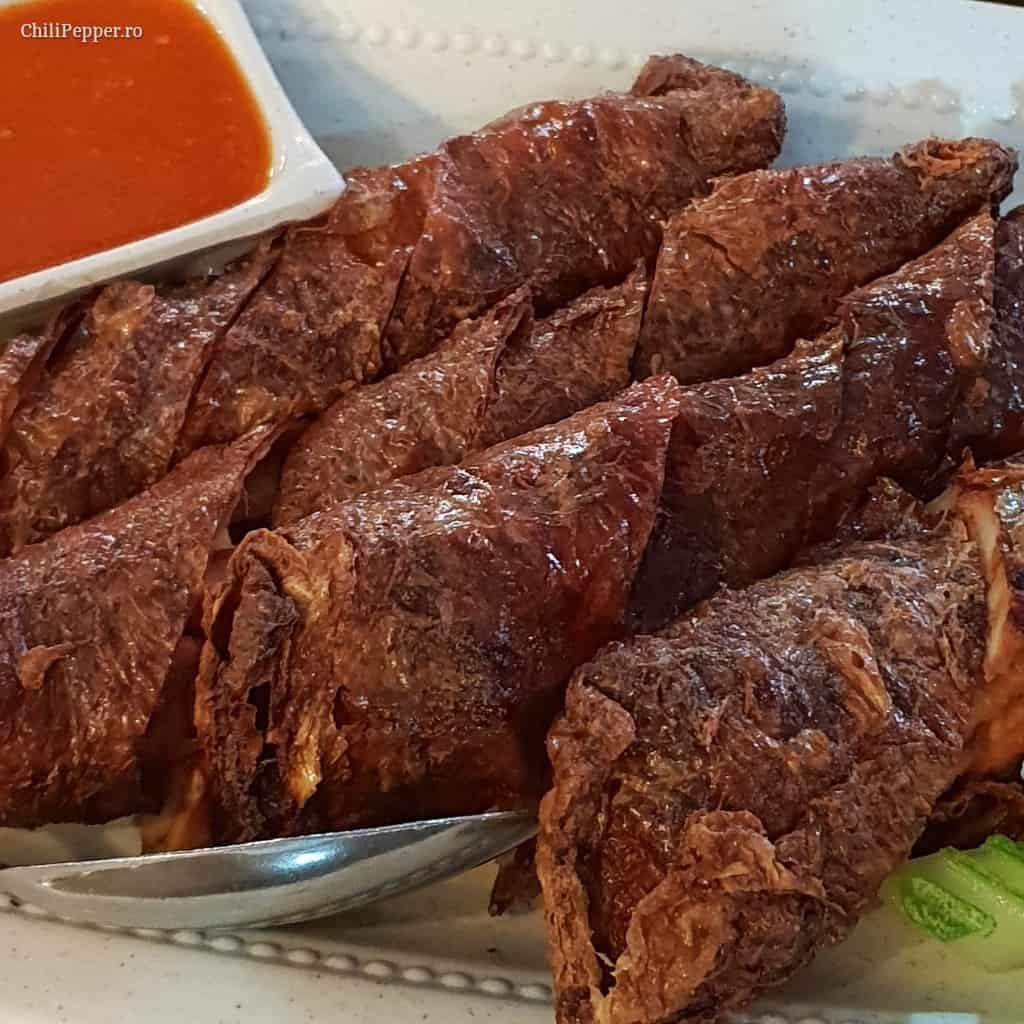
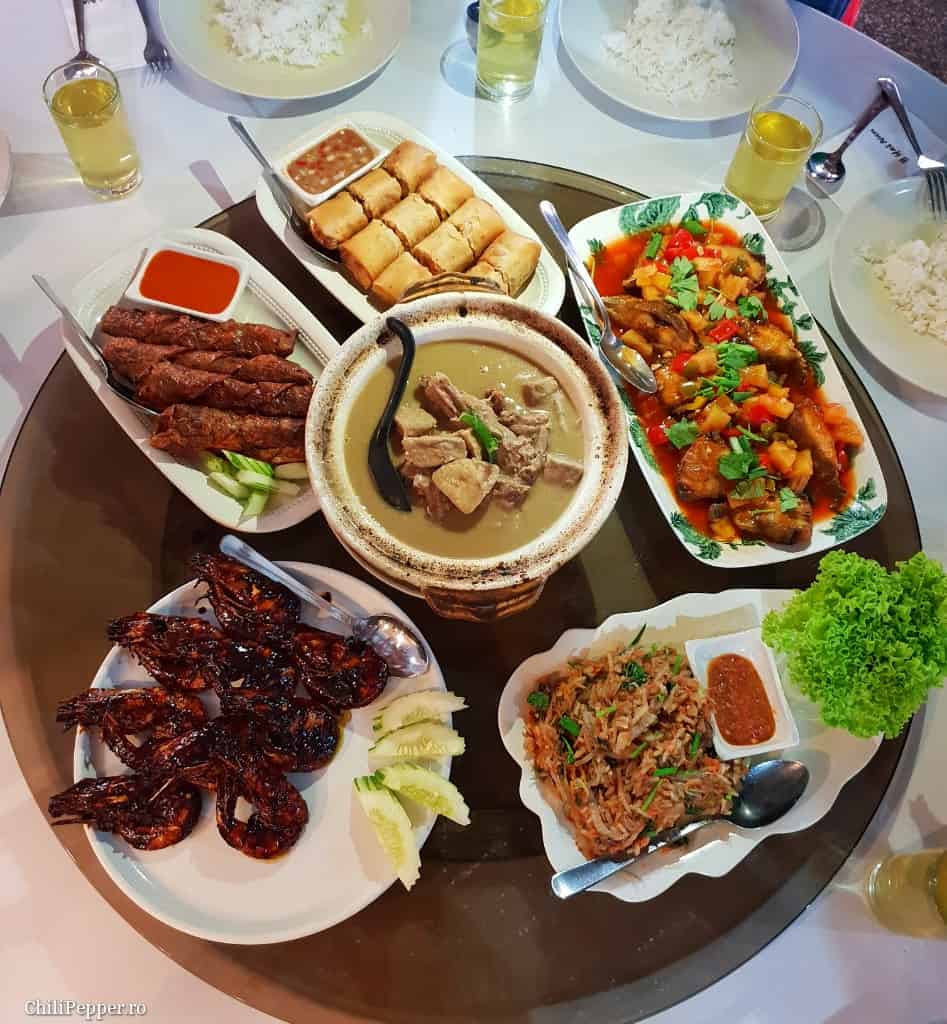
Chandra delivers these pieces of information in an effective mangleese. First of all, Chandra is not a genuine sexy Malaysian, ready to seduce you after she gives you a killer look, but he’s our guide. With a look that brings a combination of a late hippie and a taxi driver anointed with all the alibis, Chandra is nicknamed “The Moon” because, of course, this name is a Hindu moon deity. And the mangleese (“manglish”, in fact) is the legacy leftover from the British colonial period. You get it, don’t you: Malaysian + English = love. It’s all an equation with dozens of known. To be fair, Chandra speaks English because if he would speak manglish, we’d get confused.
Penang, the second Silicon Valley
The fact is that Chandra knows everything. And if he doesn’t, he’s probably making it up. Anyway, he’s been doing tours for 30 years and knows every island crest. The happiest is when we go through the local Silicon Valley. Penang is the second-largest producer of microchips globally, after San Francisco. And that’s enough to make this island a little paradise. In other words, people do it well; they earn well, eat well, and thrive. Until last year they didn’t even have taxes, and the 8% imposed recently upset the ruling party. “In Penang, we always vote backward, with the opposition,” Chandra explains. “That’s why they got mad at us and introduced taxes.” 8%. .
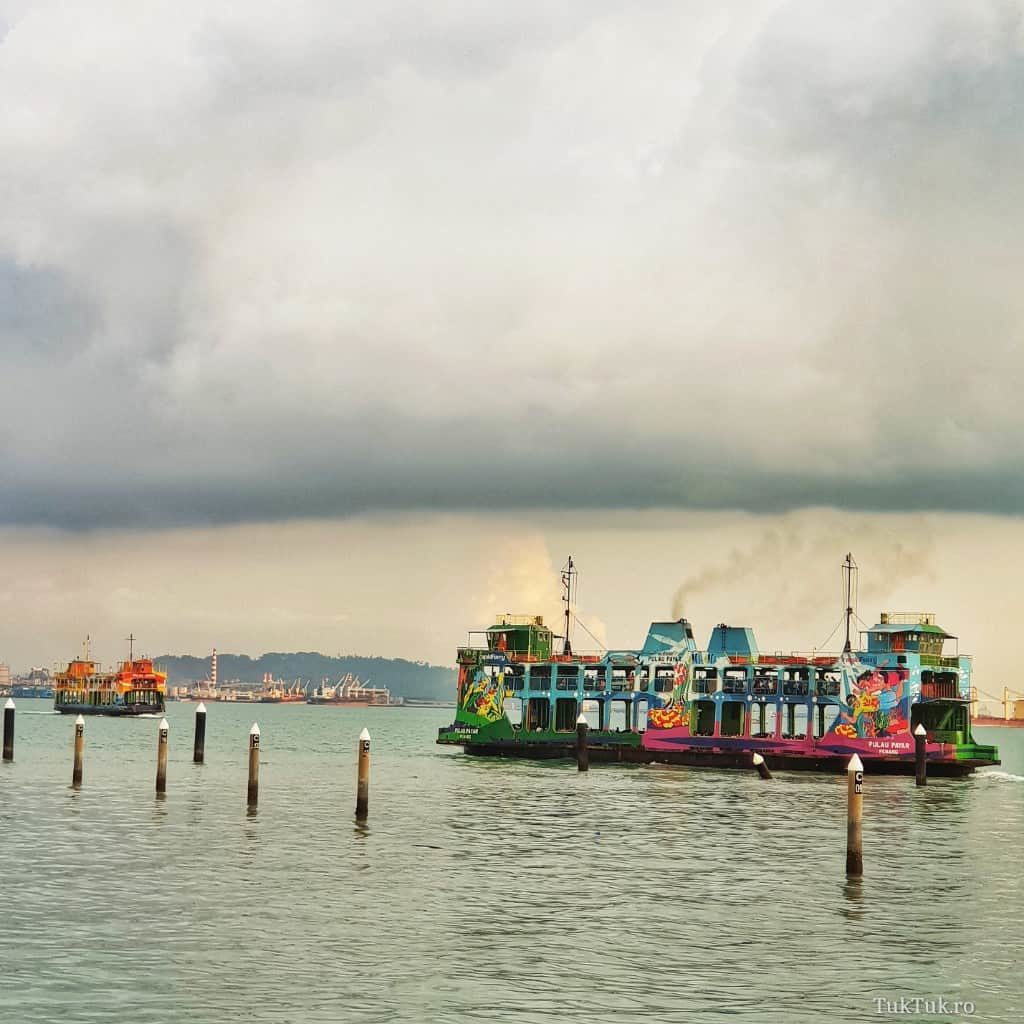
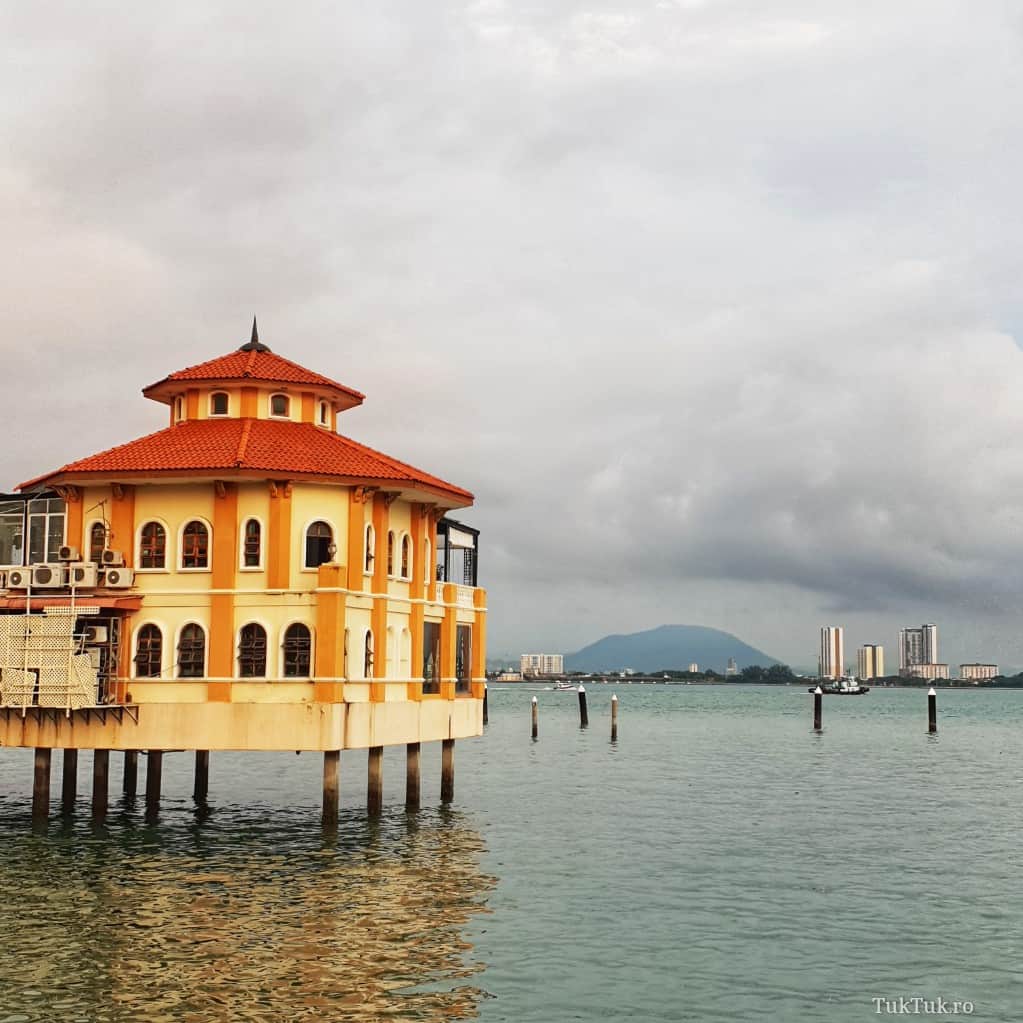
Malaysians use ringgits as currency. At the time of my visit, one ringgit was 0,24 USD. Here, the price per liter of petrol is 2.5 ringgits. The price of a four-room apartment is 75,000 ringgits. The minimum wage is 1,000 ringgits. A middle manager probably would reach 3-4000. If he has a wife who wins 2000, his family makes a good living. The 500 microchip factories are doing good.
The urban landscape is a mix of semi-skyscrapers and rural houses. Chandra says that Penang Island was a big village when he was a child. Everything that’s a high-rise building has been built in the last 30 years. It’s normal: what microchips were we making 30 years ago? Maybe micro faces carved in wood. Or coconuts.
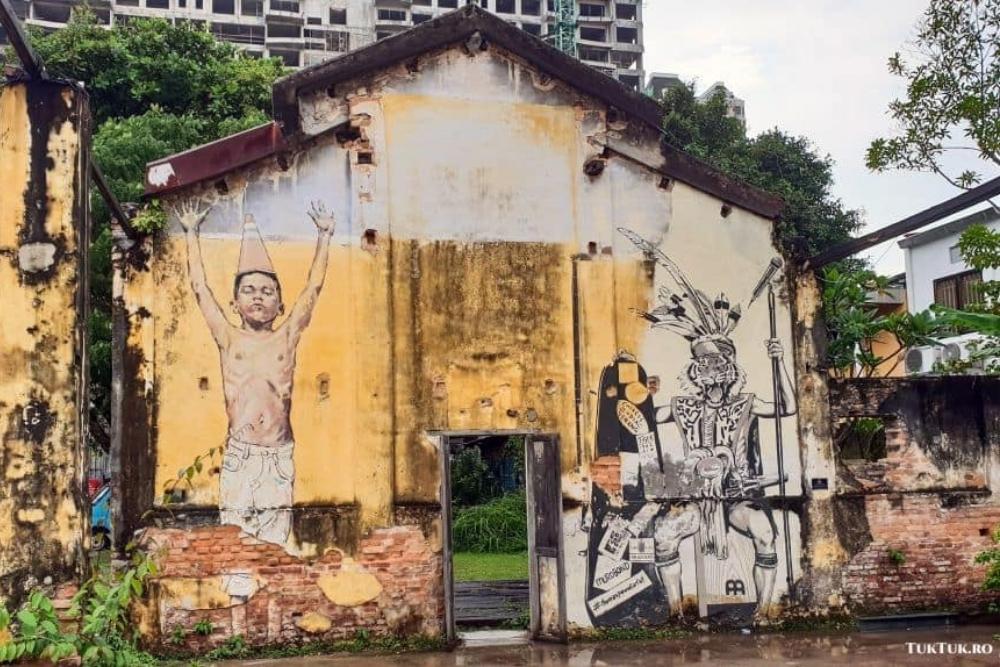
The history of Penang began only at the end of the 18th century when Captain Francis Light laid the foundation of George Town. In 1867, Penang became a British colony, and things remained until the Japanese invasion during the Second World War. Tenacious people, the Insulars returned in 1845, but Penang then entered the Malaya Federation, which in 1957 gained its independence and became Malaysia. It’s not a worse or milder history than others – rather significant is that the island of Penang began to matter in the 70s when it was oriented towards the tech area.
I’m picking up another caramelized shrimp and watching a new round of rain descending on the Penang. The monsoons are doing their job in October without straying too hard. Come and see Penang from January to March to enjoy the dry season. And it’s not dry anyway because the moisture never goes below 75%. But then it doesn’t rain. Now it rains, then stops, then rains again, so you have no choice but to pray to the Rain Goddess (possibly with a splash) or dribble the showers, sheltering yourself for lunch or a coffee.
Want a coffee in Penang? Here are 7 cafes in Penang that locals love to spend time in.
What to do and what to see in Penang
But what to do and what to see in Penang? This is the question… of every traveler and even of every tourist. At first glance, Penang does not seem to be an exceptional island offering compared to, say, the neighboring northern Langkawi, perhaps Malaysia’s most famous beach destination. That is not the case, however.
I am embarking on a “UNESCO” tour of the capital of George Town. The Lonely Planet Guide writes that George Town is an “urban cocktail .”A combination of old and new, in which Little India and Chinatown are the two poles of “power” and in which the Old Town streets delight any walk through the city with over 700,000 inhabitants.
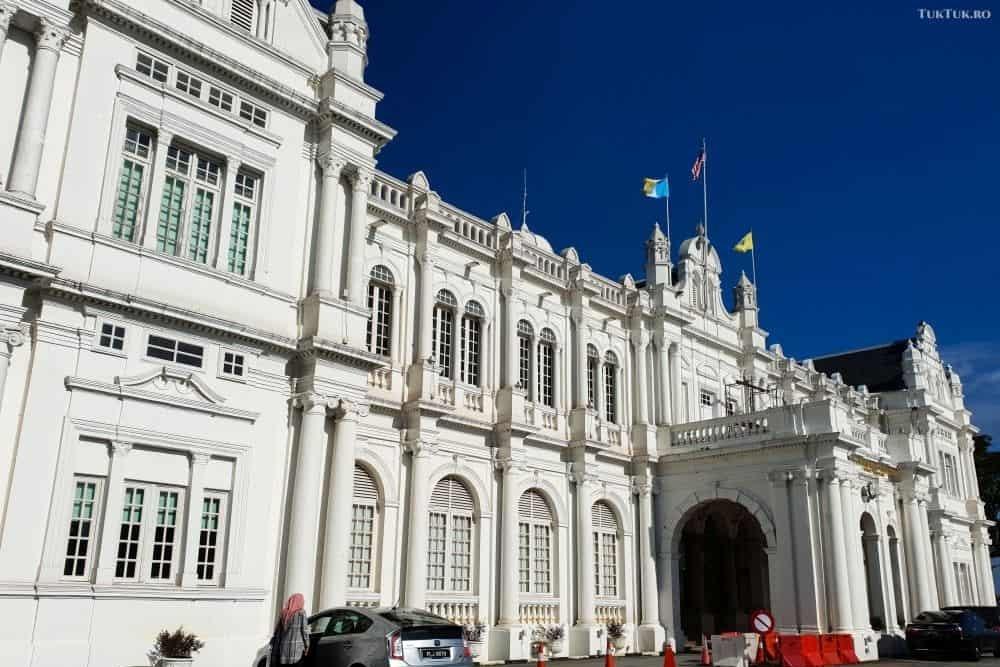
It is a general relaxation in George Town, floating in the air like a mango flavor (I avoided saying “durian,” the fruit so loved by Malaysians and so cursed by anyone who smells it). Restaurants, smaller or larger, souvenir or everyday object stores, even malls, here and there.
Somewhere, George Town keeps the colonial air of his time. I breathe a lot of it, walking Lebuh Armenian. Like, Armenian street. In the old days, it was assumed that Armenians lived here. At a specific moment, miraculously and mysteriously, they evaporated, and in their aftermath, the most luxurious establishment of the island remains Eastern & Oriental Hotel. But there were Chinese secret societies also, which wreaked havoc through Penang in the second half of the 19th century.
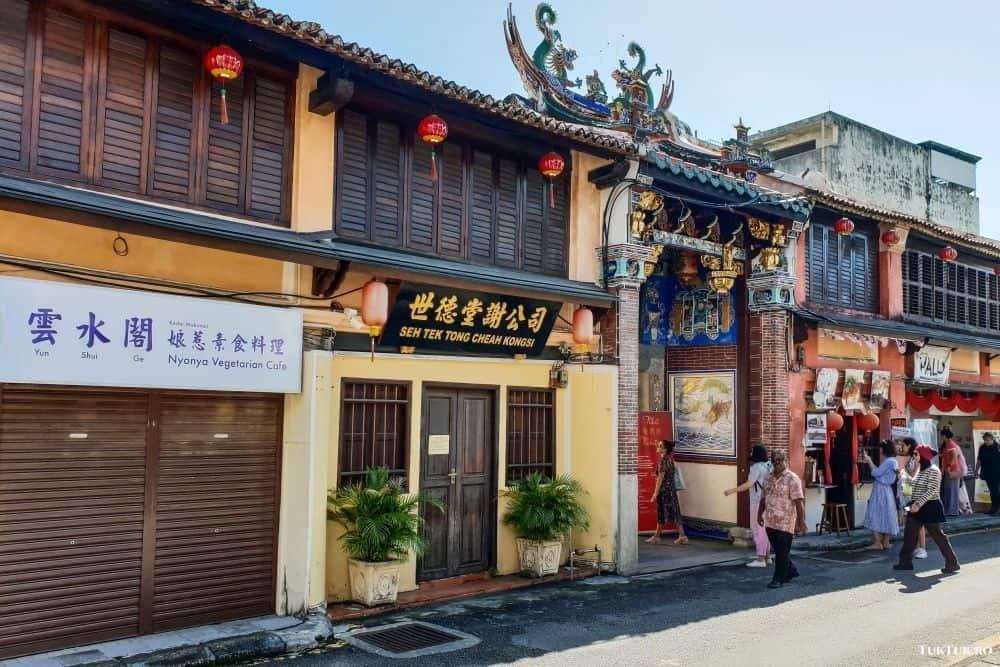
All in all, Armenian or Chinese, this street is the pride of the locals. I suppose it’s primarily because of the bohemia that he displays. Chandra exults, pointing to street art, materialized in a few drawings on the walls of houses that maintain a romantic appearance. And the central theme of these drawings is the bicycle (although Chandra seemed more excited about the picture of a nearly wiped mouse lurking behind the corner of a house of a blasphemous cat – “Come see the mouse! The Mouse!!!”).
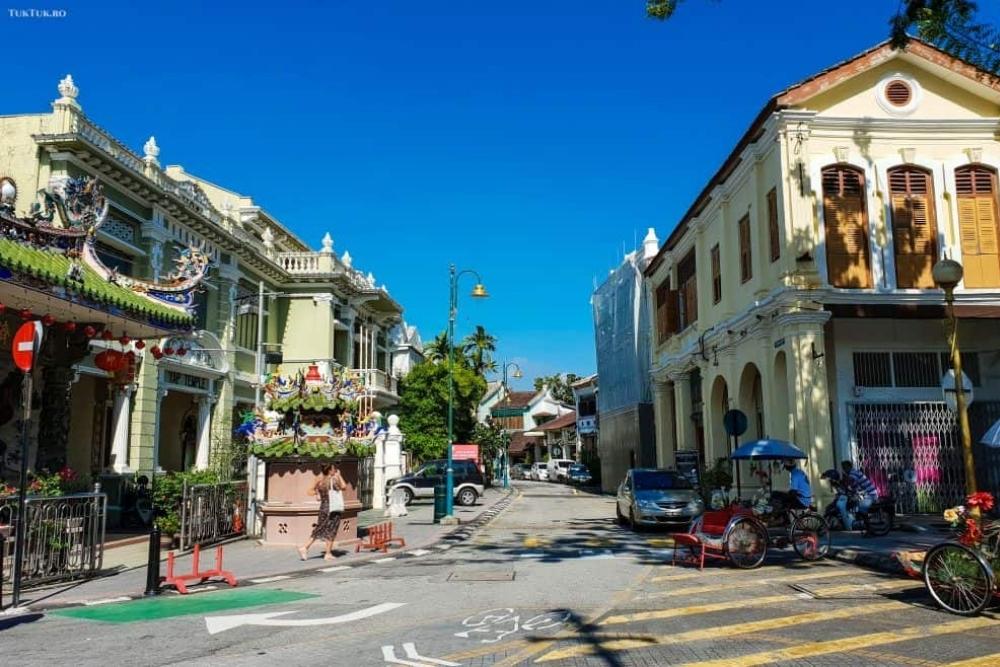
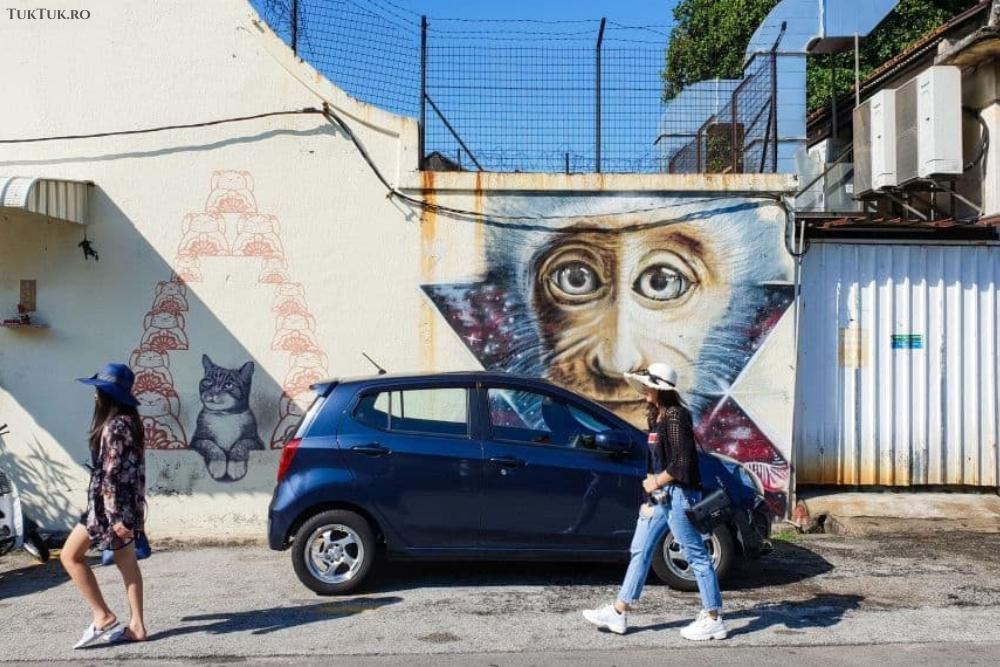
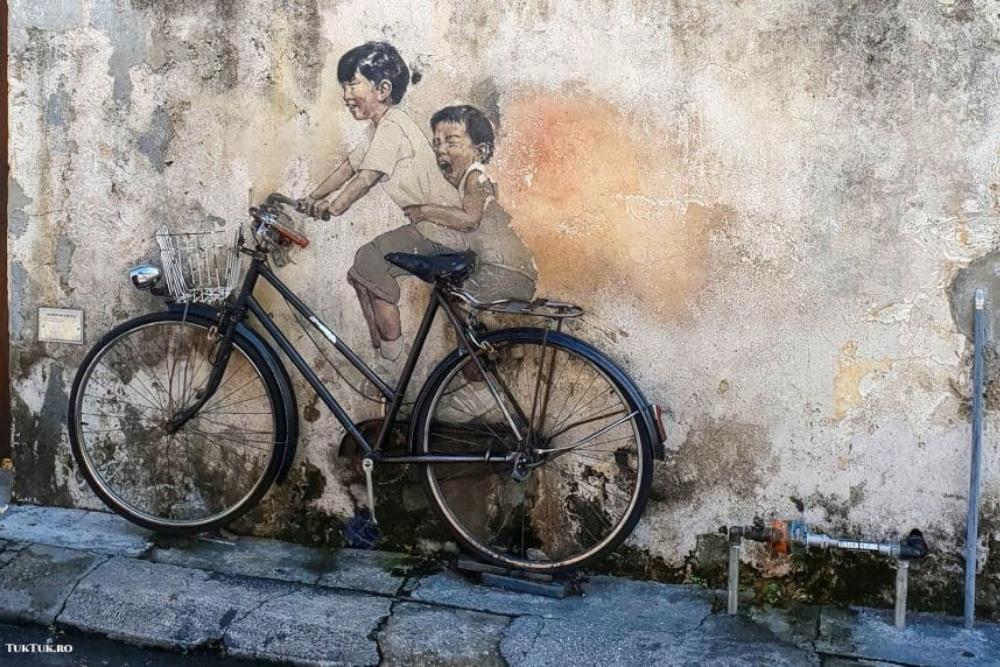
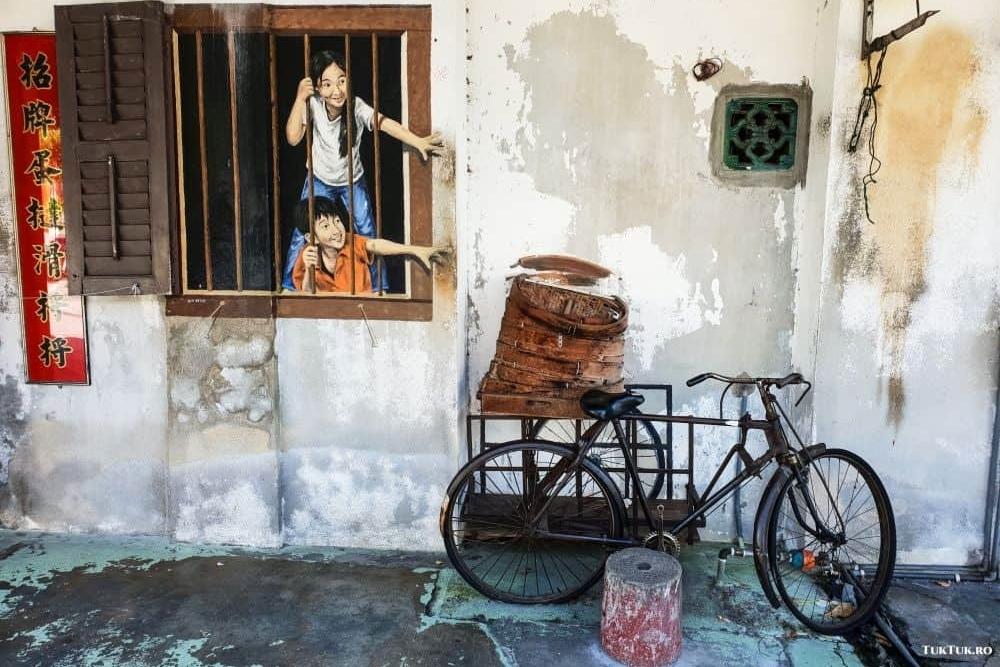
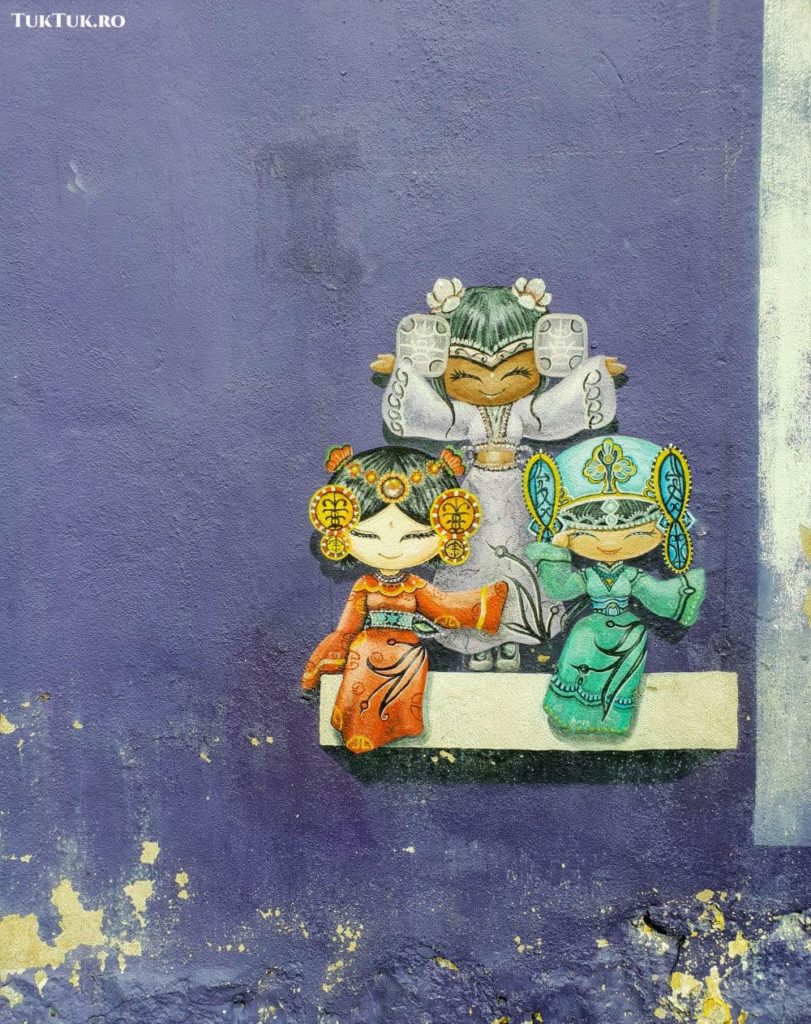
Besides drawings and houses, boutique hotels and Chinese temples complete the picture of this picturesque area. Once I turn to the right, next to such a temple, looking at the bored rickshaw drivers waiting to walk tourists with bourgeois air, I realize that the charm of this city should be enjoyed at length for several weeks. We stop in a cafe where two kids smile while bringing drinks to your table, and from the balcony, George Town reminds me of one of my childhood places, called Traian Hall, in Bucharest. I expect to hear a tram tumbling on the tracks. Still, there are no trams in Penang, so I quickly return to reality after a few steps that take me into a unique area, not before crossing an intersection with the first diagonal pedestrian crossing I have ever seen.
Four different places of worship were in a common area: a Hindu temple, a mosque, a Chinese temple, and an Anglican church. Three constructions that “speak” about tolerance and understanding remind me that in Malaysia, there are 21 public holidays that pertain to different religions and are celebrated jointly by all believers. In short, if it’s Christmas, it’s also celebrated by the Hindus.
I enter the Chinese temple, where the smoke of scented drunks surrounds me. In a room, the urns of those transformed into ashes are crammed on a wall, and I imagine their spirits haunting, invisible, the perimeter. I go out into the yard, where a lousy dog barks, and I continue walking towards the white mosque, which I find is 217 years old.
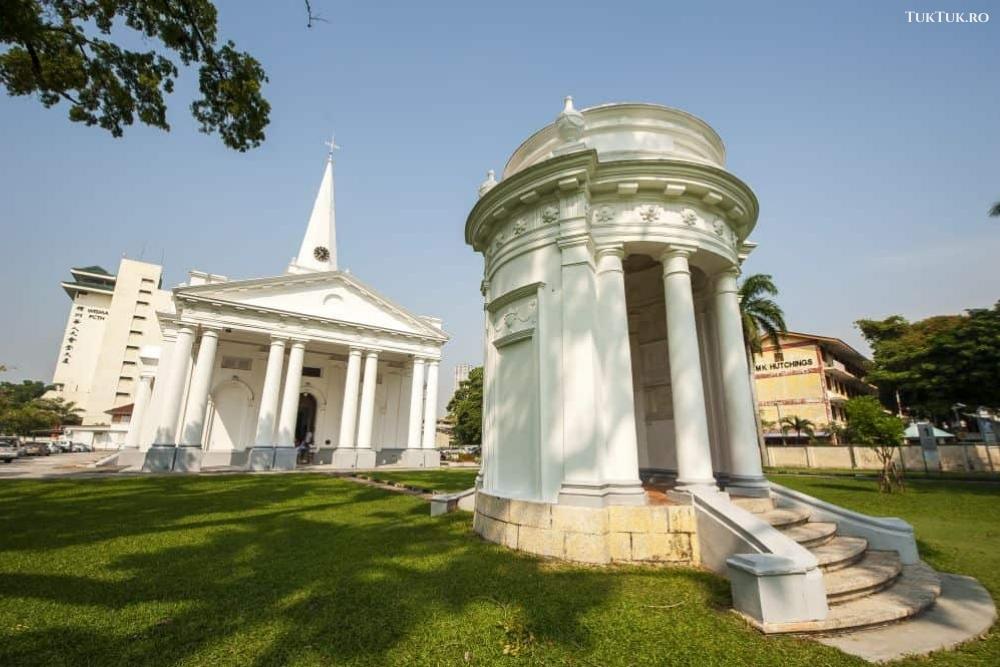
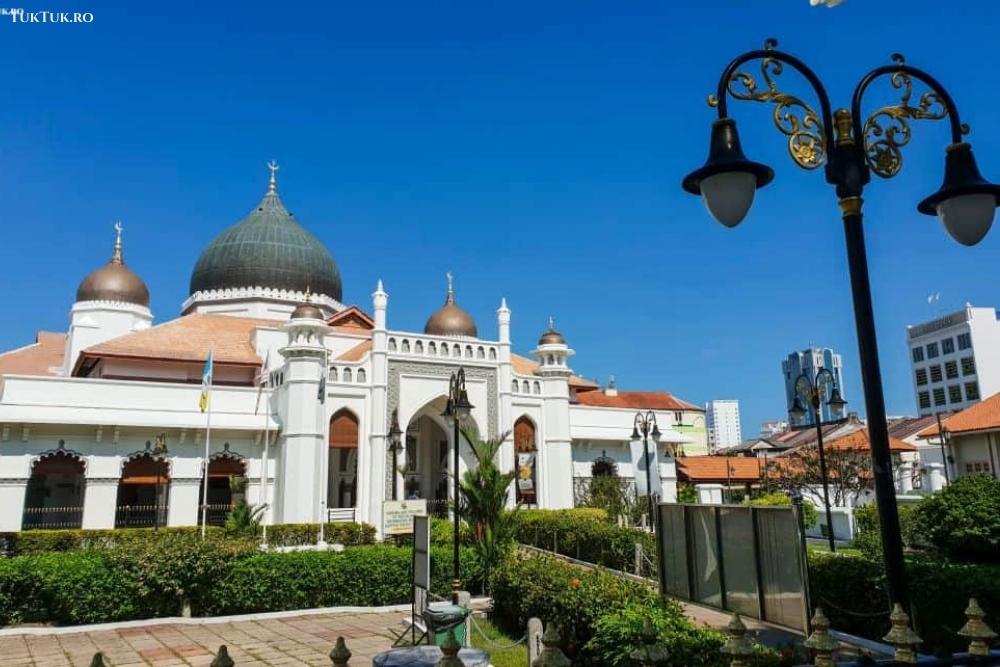

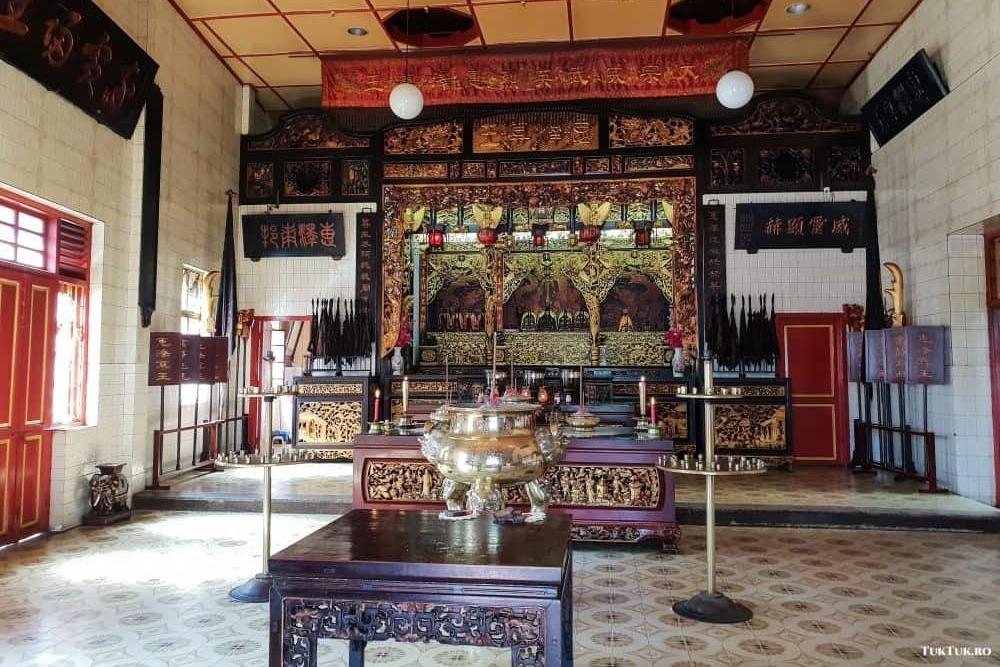
Then I enter the Anglican Church St. George, greeting the respectable guy at the entrance, who tells me three times that, next year, the church will turn 200 (which makes it the oldest Anglican church in Southeast Asia). I tell him we have an Anglican church in Bucharest and show him its picture. “It’s very beautiful, but it’s different.” It is: ours is red brick, theirs is white limestone. Although under the beams is mahogany, brought from India, which is why the venerable is proud and, before leaving, reminds me one thing: “I am not a member of this order, but know that this church celebrates 200 years of existence this year.” Amen.
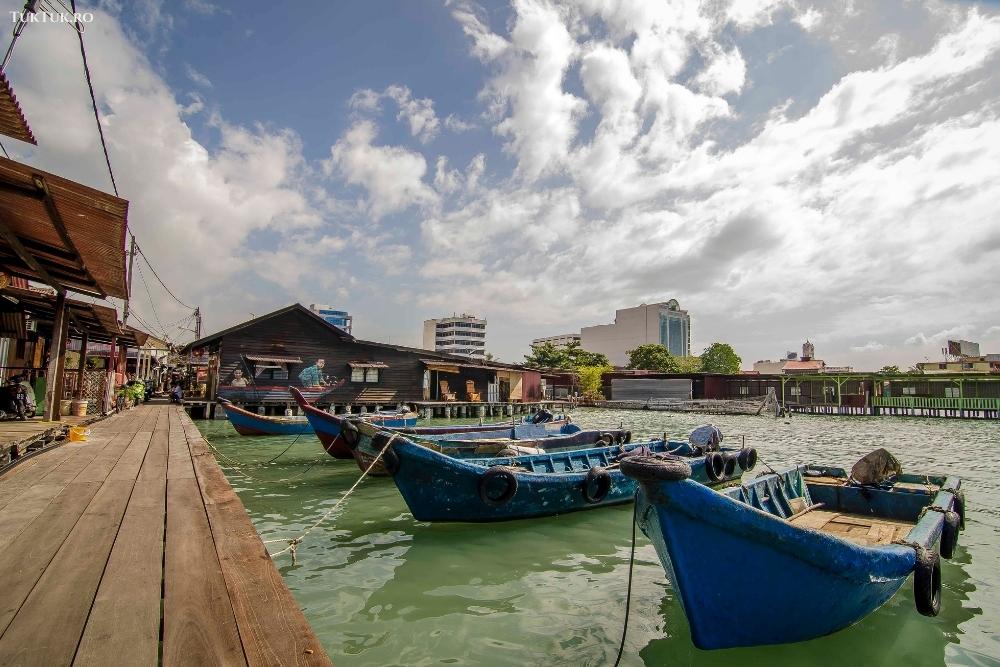
While walking through George Town, I passed other objectives of interest, which, if you get here, you can study, more or less. Among them, Clan Jetties – six piers (initially seven), considered the last bastions of the old Chinese who lived in Penang. In fact, a row of houses on the water, named after the ancient Chinese clans, Chew Jetty is the most popular among tourists. You can go on the long pontoon, which pierces the water, bordered on both sides by houses and shops, at the end of which a small temple awaits you.
You can also record, if necessary, historical buildings such as the State Museum and Art Galleries, Fort Cornwallis, City Hall, and the old City Hall. Consider, however, not to miss a spectacular house transformed into a kind of museum: Peranakan Mansion.
Peranakan Mansion was once the home of Chinese captain Chung Keng Kwee, a hero of the 19th century, a millionaire philanthropist, a visionary, an entrepreneur and a trader, respected by both the local community and the colonialists, the leader of a secret society, and, I believe, a sort of mafia in the good sense of the word.
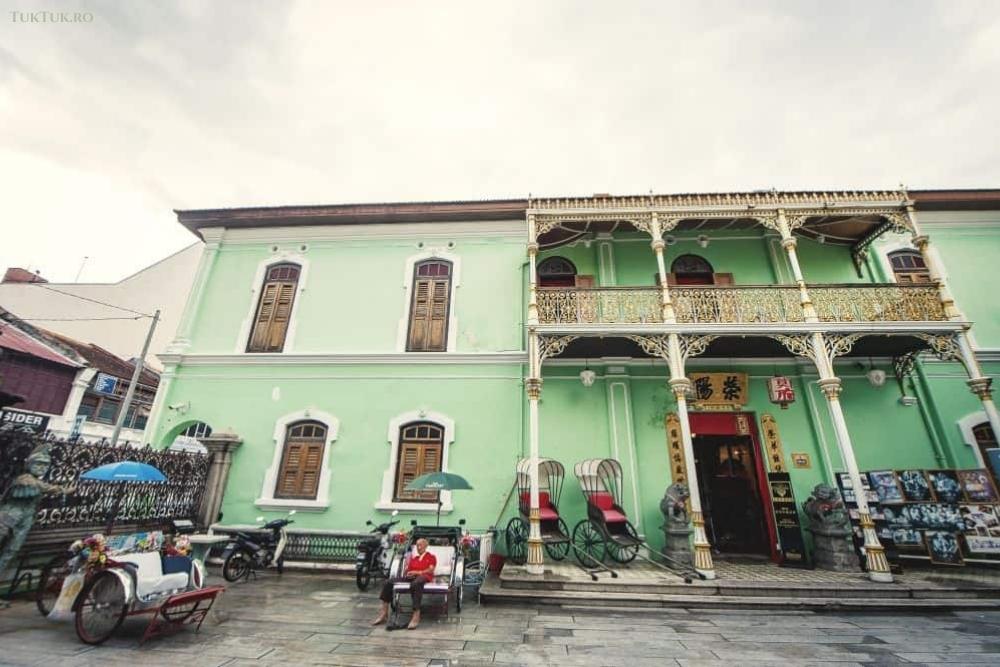
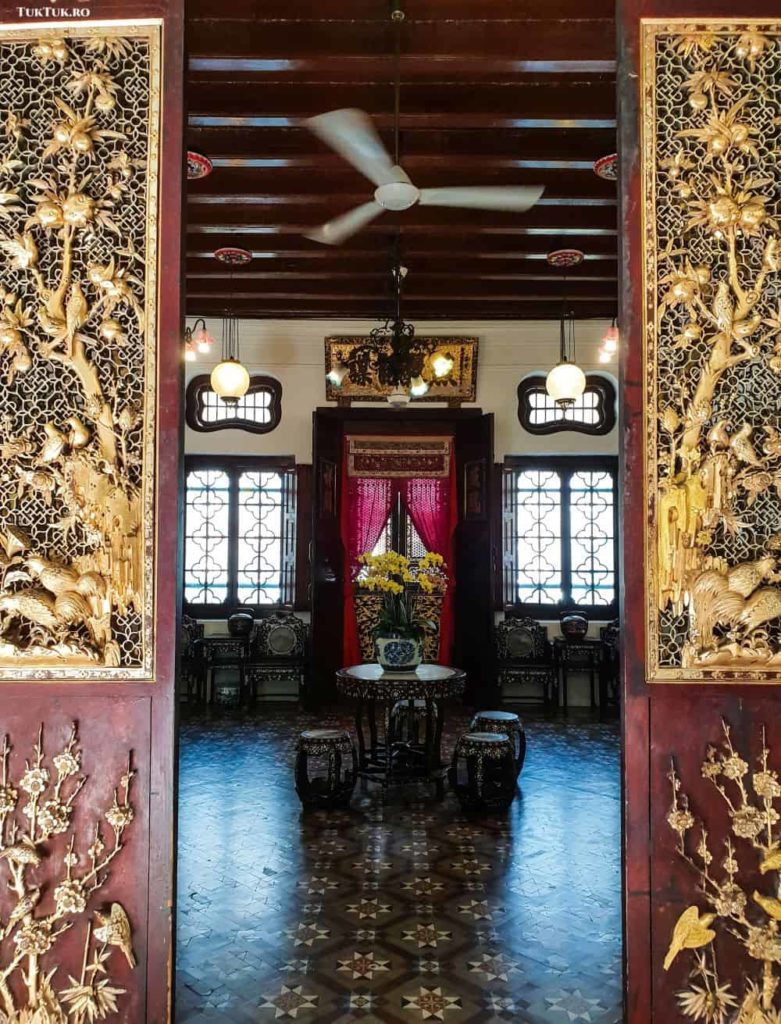
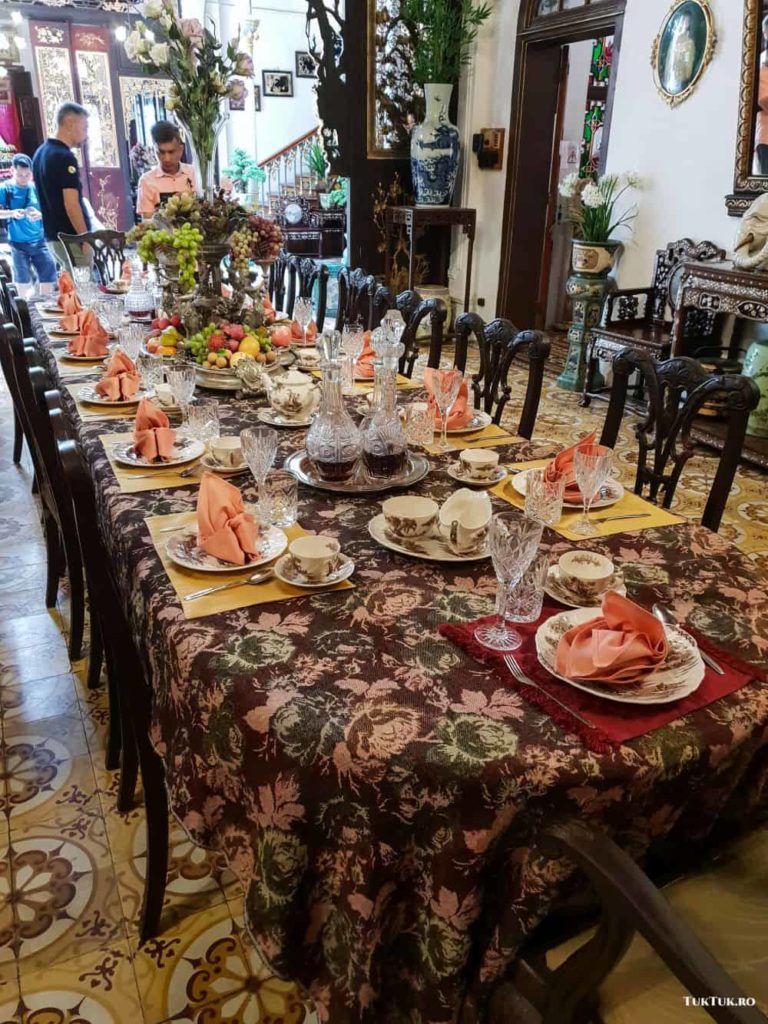
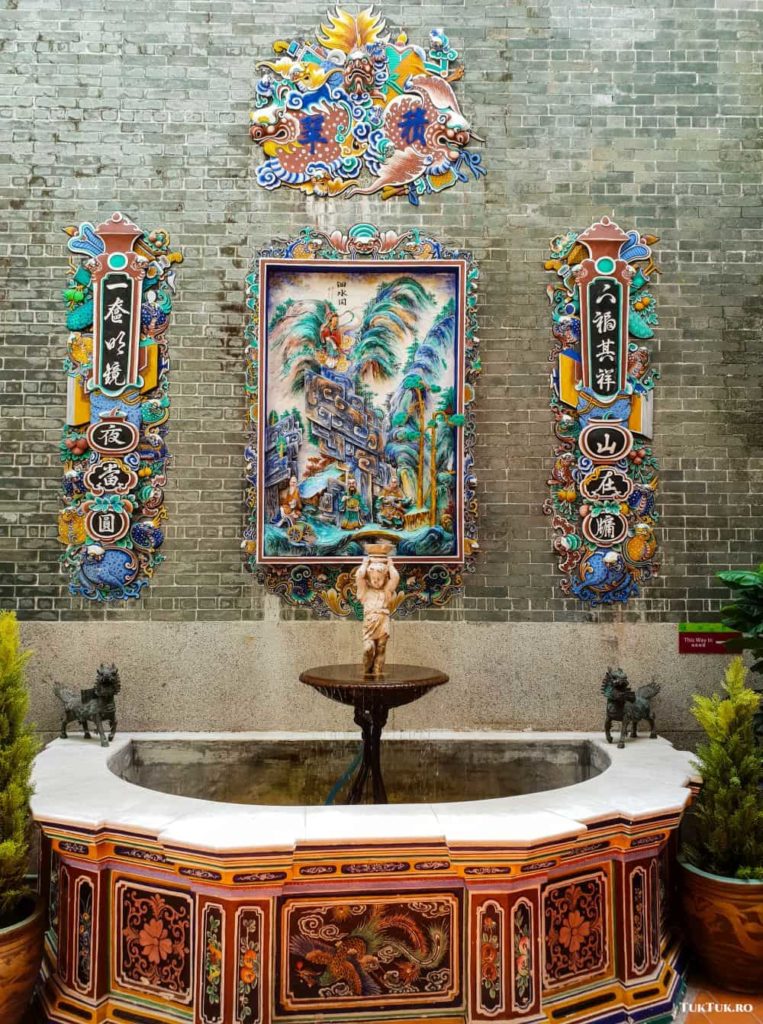

On the other hand, the Peranakans represented an influential Chinese local culture (they included two communities: Baba and Nyonya), representative of Penang, Malacca, and Singapore. These Chinese immigrants to Malaysia in the 16th century had a unique lifestyle, with customs and traditions that defined a significant heritage, whose influences are still evident in Penang’s language and gastronomy.
In the Peranakan Mansion, built at the end of the 19th century, you discover a fantastic world transposed in a truly restored palace, with fabulous rooms, from the sumptuous dining room and the dining room (with plates and cutlery prepared), to the rooms dedicated to jewelry, shoes, artifacts, etc. An eclectic mix of English tiles, Scottish hardware, European furniture, and Chinese panels carved in wood. 20 lei at the entrance for a tour of about an hour, which is impossible not to enjoy. I remain with the image of the two huge mirrors on both sides of the dining place, their presence explains that sitting at the head of the table, facing the entrance, Chung Keng Kwee could see at any moment if there was a sudden attacker, left, right or front.
Nightlife in Penang
Penang’s nightlife isn’t a trivial chapter either. The main recommendation is to go to street food in George Town. I took Chulia Street, where I stopped in a bar with live music to enjoy a plate with Char Koay Teow, probably the most representative Malaysian dish — fried rice noodles with soy sauce and oysters, and various things among them, from shrimp to peanuts.
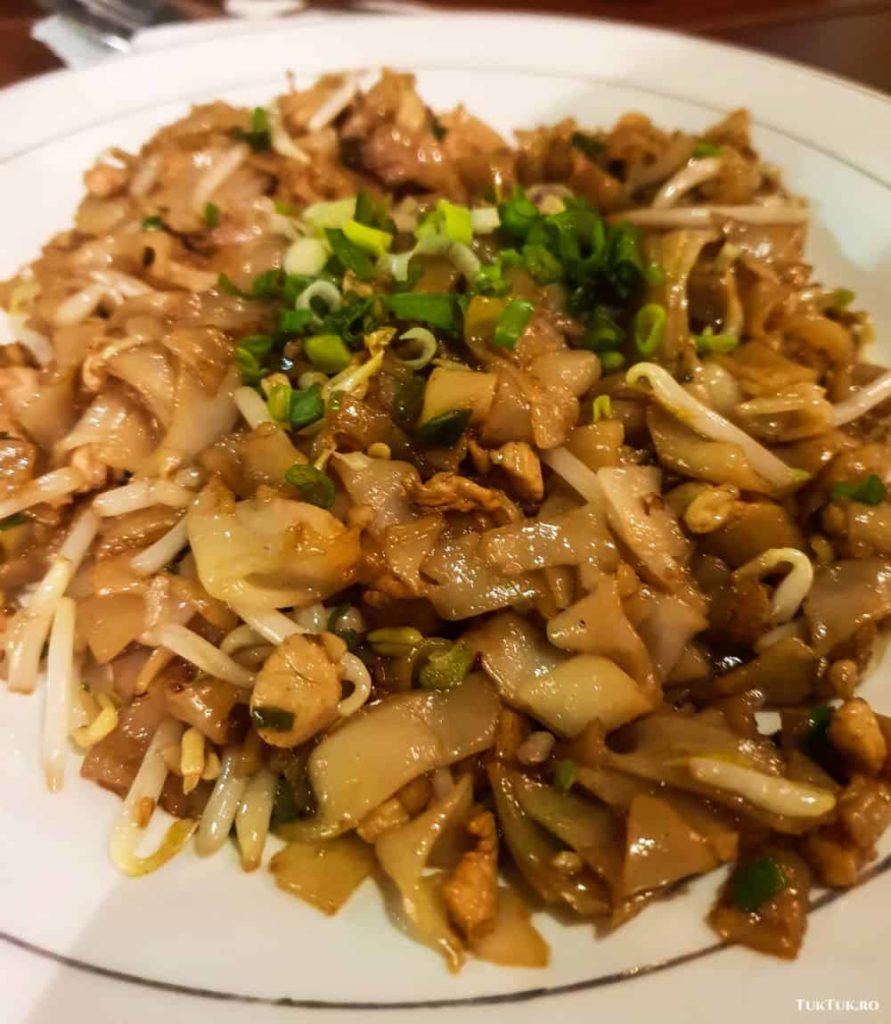
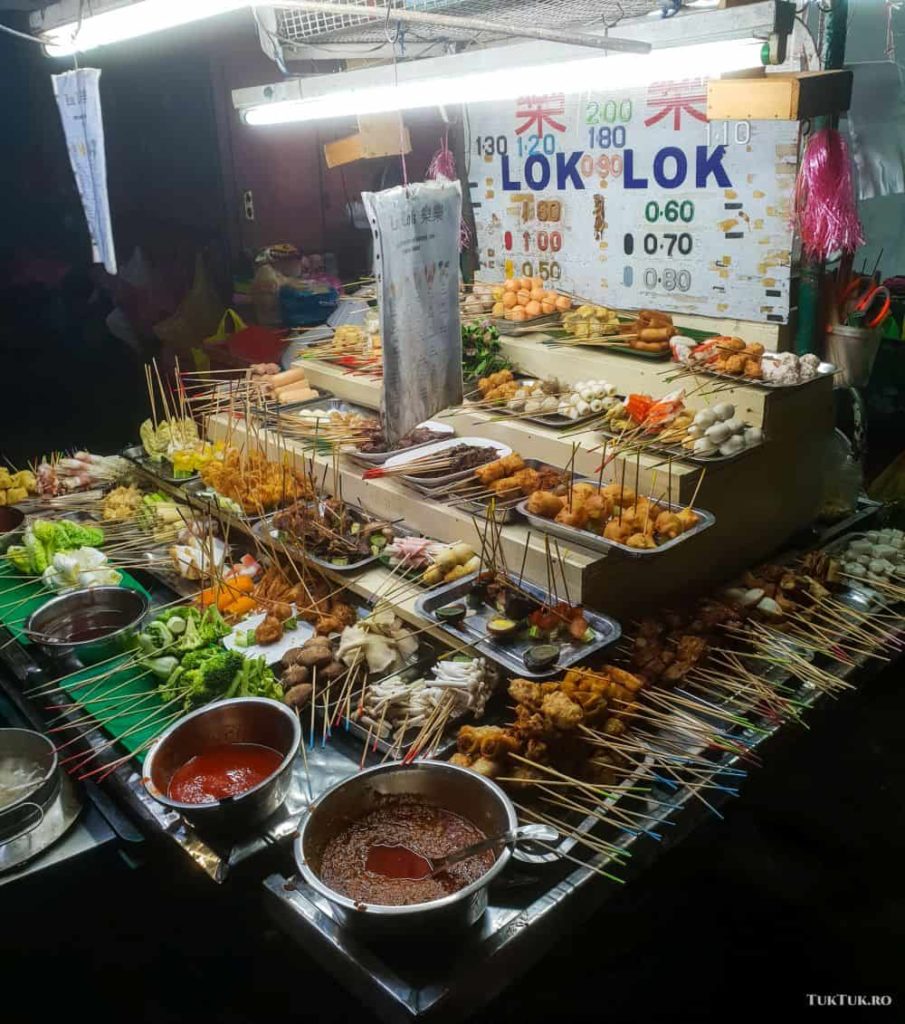
On Lebuh Chulia (you caught that “Lebuh” means street), I discovered stalls with “sticks” (Lok Lok). More precisely, with all kinds of skewers, vegetables, and animals. The hungry who want to save themselves follow the procedure: ask for a plate, after which it serves themselves with as many sticks as it wants, taking care to keep them. The skewers have the heads you grab colored in different colors, each representing a category (with a different price): chicken, fish, seafood, vegetables, etc. When you’re done eating, the seller counts your sticks and makes the total. How much is one of them? The most expensive was 1.6 ringgats. With ten ringgats you eat a hearty dinner.
Penang Hill, the mandatory target
They say you weren’t in Penang if you didn’t go up to Penang Hill. I mean on Penang Hill, which I thought was more like a small mountain. But we talk about several hills, the tallest of which is 833 meters. Penang Hill is about 6 km from George Town and can be reached by a train, the Penang Hill Railway. This fast funicular boasts two things: it transports annually over a million visitors on Penang Hill, and it has the steepest tunnel in the world and the longest in Asia (1996 meters).
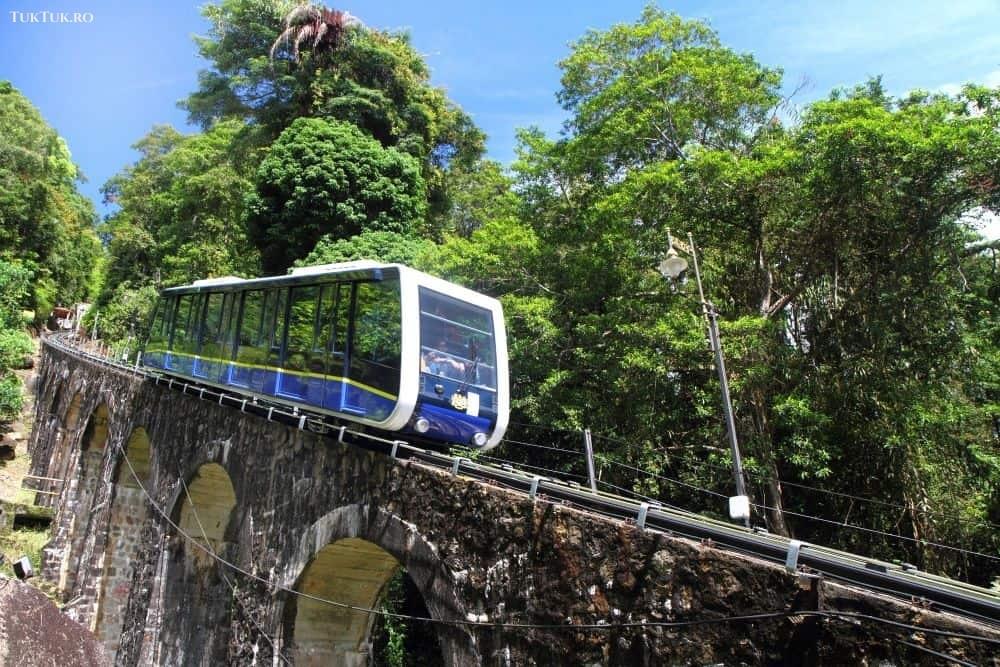
Right, the funicular is impressive. Penang Hill Railway was inaugurated in 1920 by British colonialists who wanted to climb the hill for fresh air. After several renovations over the years, 2010 it was changed entirely, allowing passengers to make their way one piece (and not two, as was the case until then).
Up to about 5 minutes, the ticket costs 30 RM (short version, without queuing) or 10 RM (queued version). The question is what you find upstairs, but given that everyone’s climbing up the hill, it’s clear there are exciting things. First of all, the landscapes. There’s no better place to “fly over” the island with your eyes, and photographing the landscape will eat your time a lot. Whether it’s the sea, the high blocks, or the rainforest, the views are extraordinary.
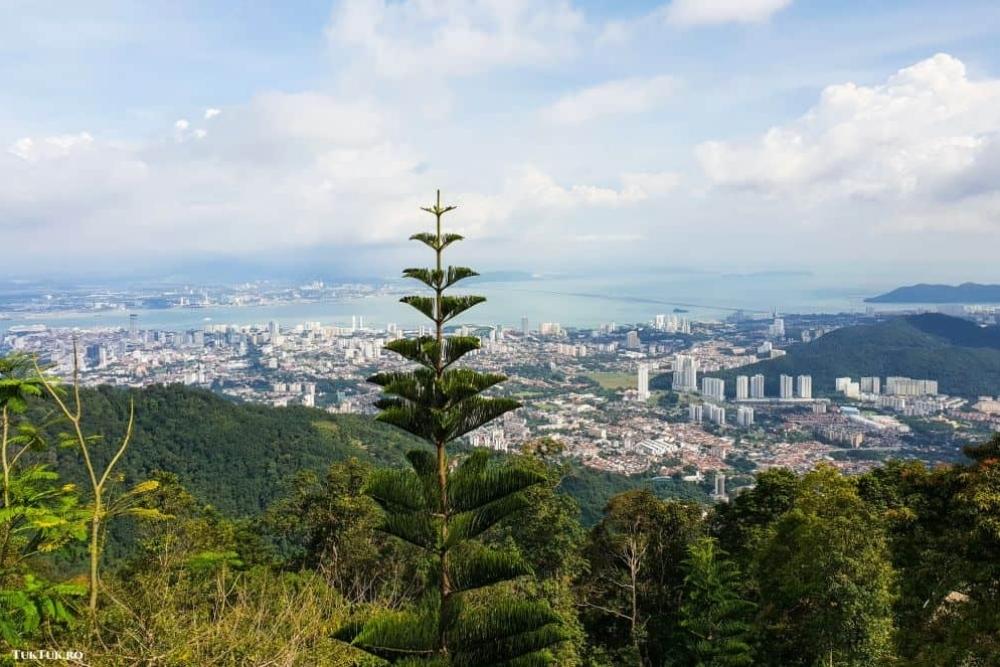
I was greeted by an atmosphere of some fairground. It was as if the Malaysians had gone to a picnic in the woods with their families. And yet, it was a fair of retained elegance. On a terrace, they played quality music; people were quiet, and you didn’t see “small” smoke coming out of who knows what disturbing barbecue. On Penang Hill is an ancient building (Convalescent Bungalow, dating back to 1803) and several other examples of British colonial architecture alongside modern Asian facilities.
Among the first is Bel Retiro, a bungalow built in 1789 for the island’s governor, which has since remained the authorities’ property. In addition, you can visit a Hindu temple, a mosque, admire a 250-year-old cannon, and, most of all, hike. There’s also an owl museum, a pavilion where you can experience an earthquake and typhoon simulation, a mini-village, a garden with “dinosaurs,” a spa, and all these other attractions to make you spend a busy day.
The Habitat – a walk through the rainforest
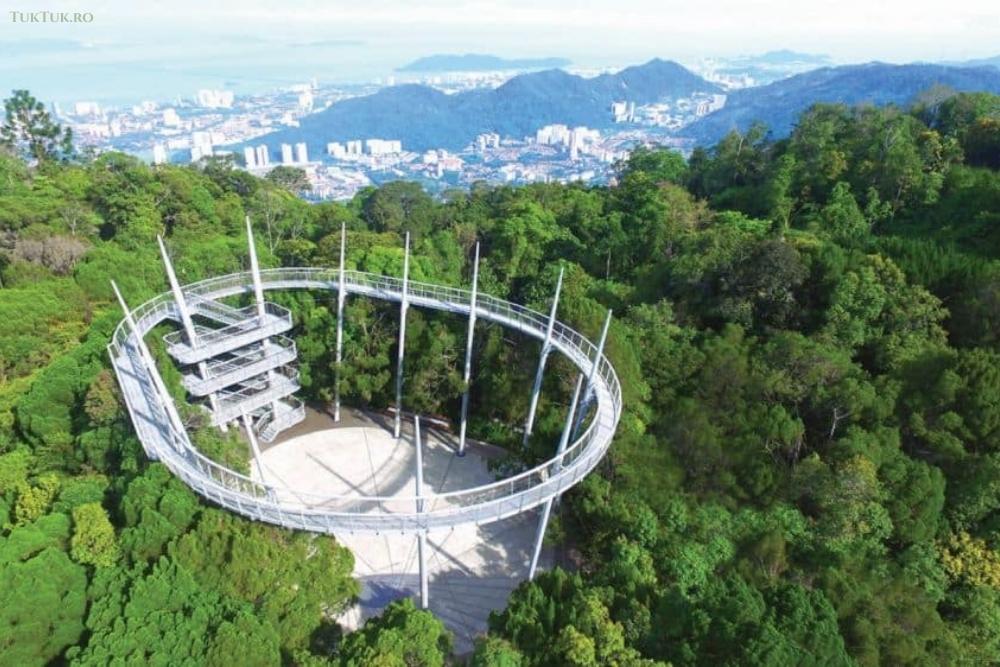
But the central (and most interesting) part of the trip on the hill was the walkthrough of The Habitat. This place aims to reconnect with nature, throwing you into the middle of a rainforest that’s 130 million years old. It is, practically, a walk for about an hour through the middle of this forest on an excellent route arranged (actually, The Habitat was opened only two years ago), in which you learn about the flora and fauna of the place: plants, trees, insects, birds, reptiles, mammals, etc.
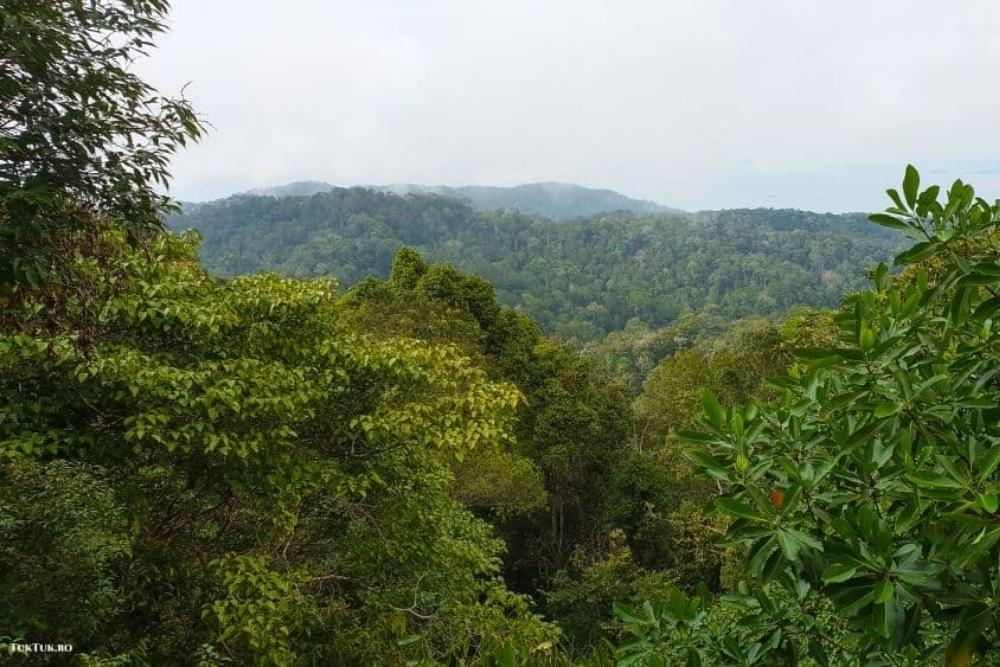
The route ends with Curtis Crest Tree Top Walk, a circular path perched on top of some pillars, where you get a 360-degree view of the entire island. It is not recommended for those with a fear of heights, but it is highly spectacular. And although I haven’t had the chance, I imagine it’s where you can capture an incredible sunset. So, if you intend to visit Penang Hill, synchronize everything so they catch you there at night.

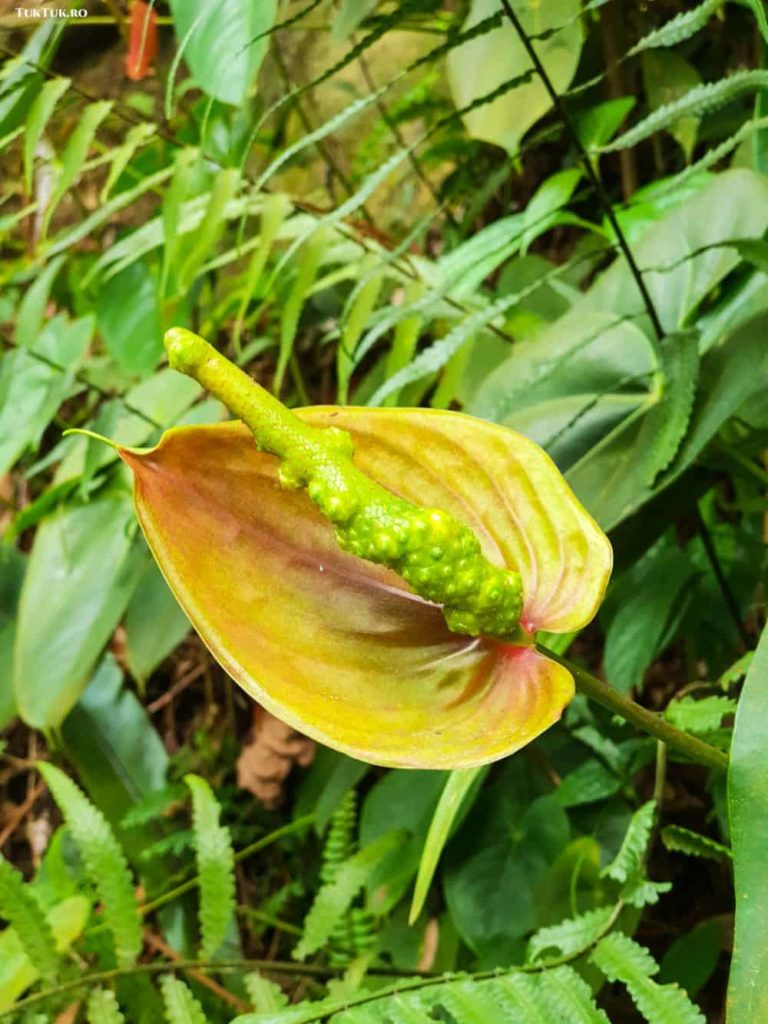
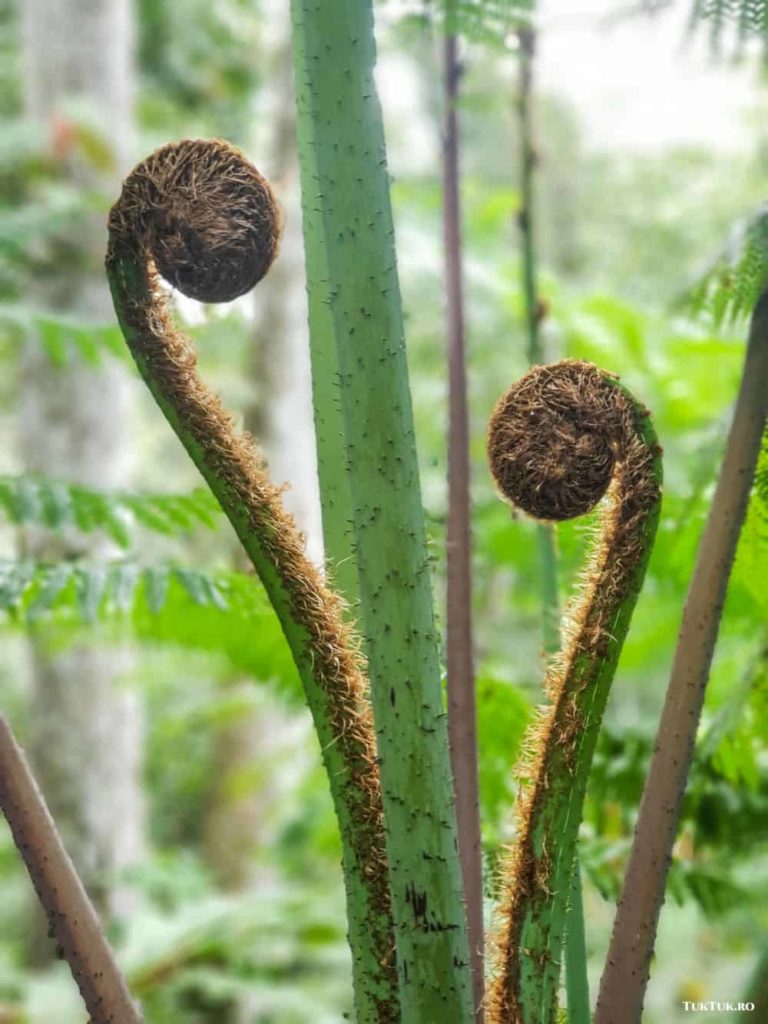
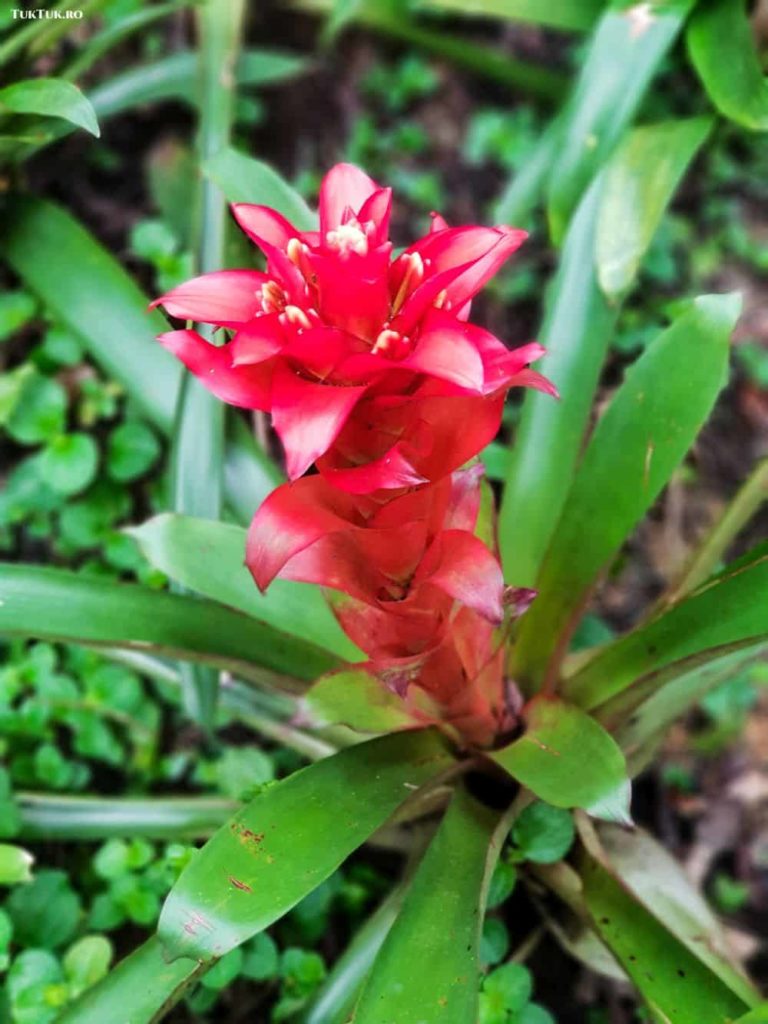
The bottom line is that Penang is a destination to visit within Malaysia. Apart from the ones we discussed above, there are many other places to explore (Penang also has beaches, for example); therefore, without huge expectations, they are suitable for any traveler curious to discover the world. Some would say that you have nothing to do here, but I would argue otherwise: if you can find its charm, Penang is an island you can fall in love with. Until then, spend 2-3 quiet days looking for its meanings and magic.
Where to stay in Penang
Penang has many hotels, and most define themselves as boutique hotels. I stayed two nights in one of them – Penaga Hotel, very well placed, near the old center of George Town. It was built in the 20s and renovated in 2008 to be transformed into an establishment that keeps a good part of the original furniture.
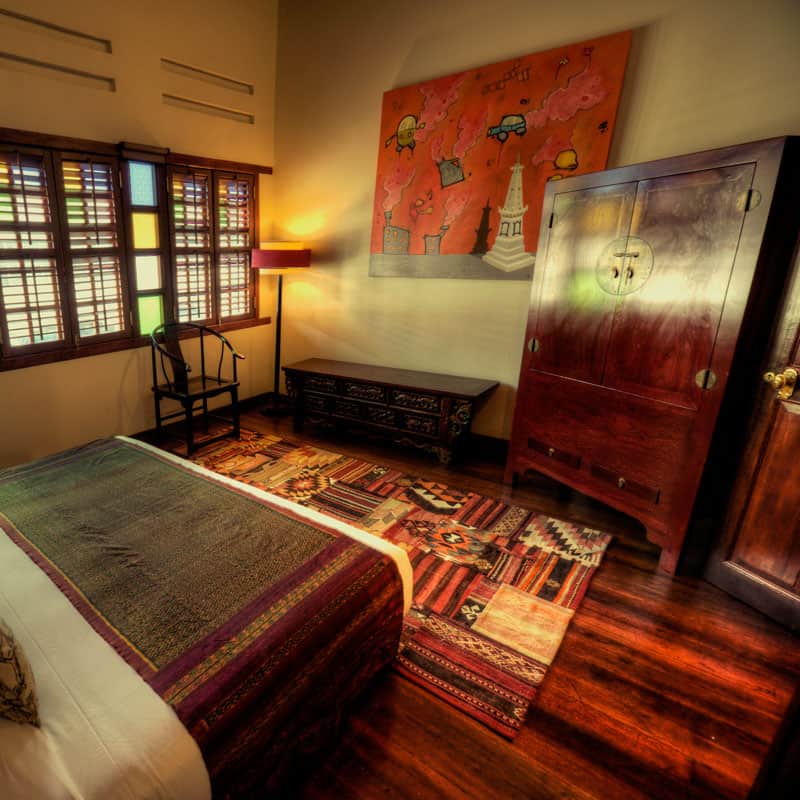
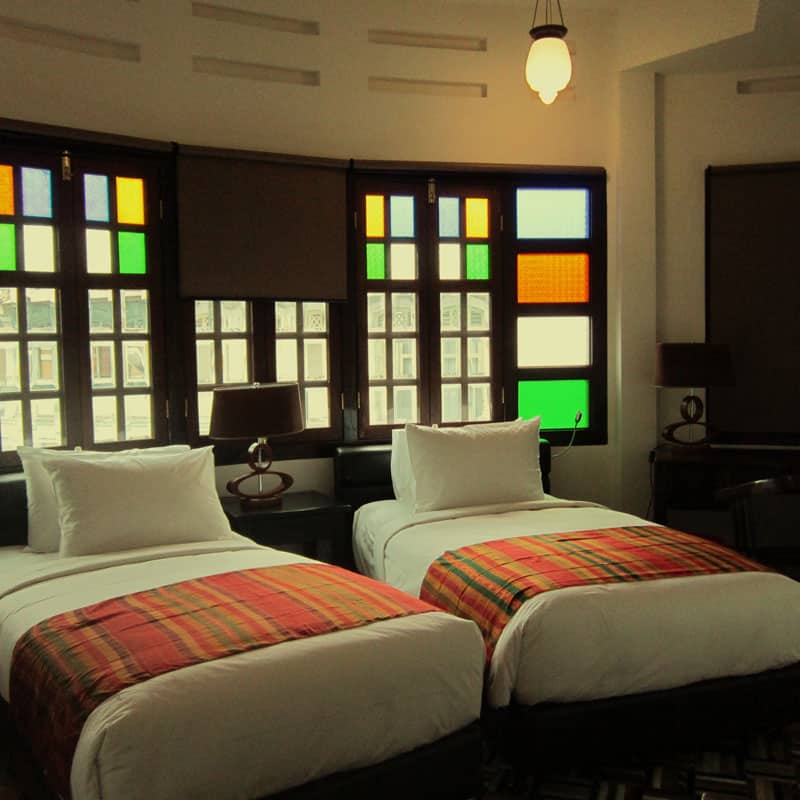
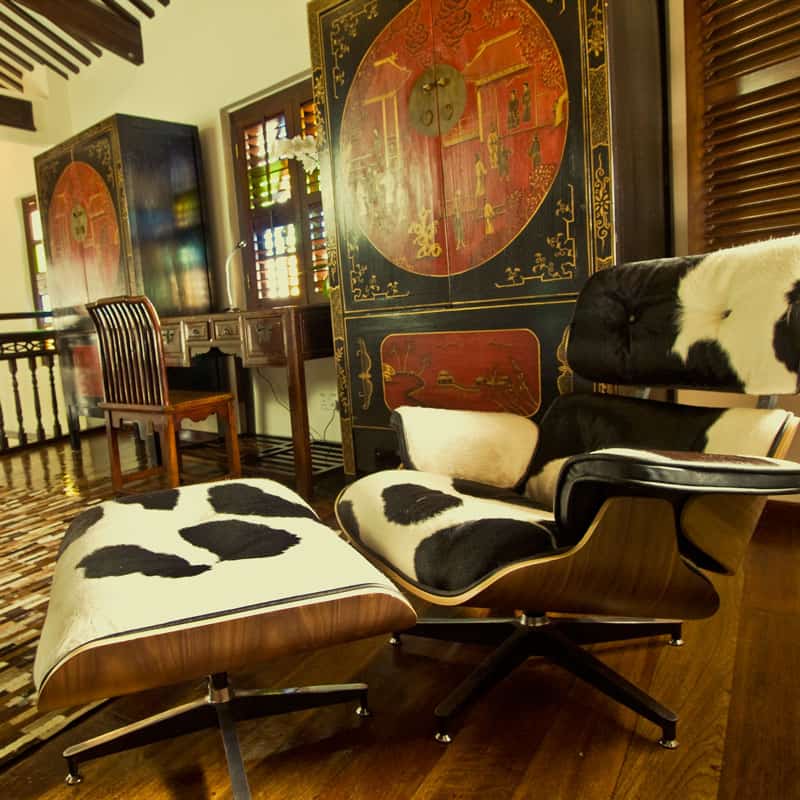
Although you might think it’s an old hotel at first glance, you immediately realize that this patina of time is mainly applied. The rooms are large, wooden furniture, with interesting pieces, which you discover thanks to the inscriptions on the walls, which tell you about them. Warm staff and a welcoming atmosphere for this 4-star hotel in the heart of Penang’s capital.
You may also like: 10 tips for a trip to India – a guide for the paranoids


